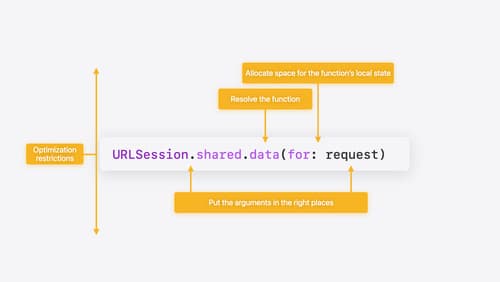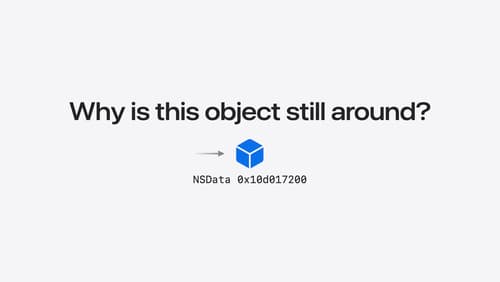optimizing swift performance wwdc 15
Asked on 2024-09-14
1 search
To optimize Swift performance, it's important to understand the low-level performance considerations and how Swift's features impact them. The session titled "Explore Swift performance" from WWDC 2024 provides insights into this topic. Here are some key points discussed in the session:
-
Understanding Performance: It's crucial to have a good intuition for the performance of different operations in Swift. Unlike C, Swift provides many tools for abstraction, such as closures and generics, which have non-trivial implementations and costs.
-
Low-Level Performance Considerations: The session highlights four main considerations for low-level performance:
- Ineffective optimization of calls.
- Inefficient data representation leading to wasted time or memory.
- Excessive memory allocation.
- Unnecessary copying and destruction of values.
-
Swift's Optimizer: Swift has a powerful optimizer that can eliminate many performance issues, but the way you write code can significantly impact the optimizer's effectiveness. Regular performance monitoring and identifying hotspots are recommended practices.
-
Memory Management: The session "Analyze heap memory" also provides tips on managing memory effectively, such as enabling whole module optimization and profiling for generics that may need explicit specialization.
For more detailed exploration, you can refer to the session Explore Swift performance (00:00:07) for an introduction to Swift performance optimization.

Explore Swift performance
Discover how Swift balances abstraction and performance. Learn what elements of performance to consider and how the Swift optimizer affects them. Explore the different features of Swift and how they’re implemented to further understand the tradeoffs available that can impact performance.

Platforms State of the Union
Discover the newest advancements on Apple platforms.

Analyze heap memory
Dive into the basis for your app’s dynamic memory: the heap! Explore how to use Instruments and Xcode to measure, analyze, and fix common heap issues. We’ll also cover some techniques and best practices for diagnosing transient growth, persistent growth, and leaks in your app.
